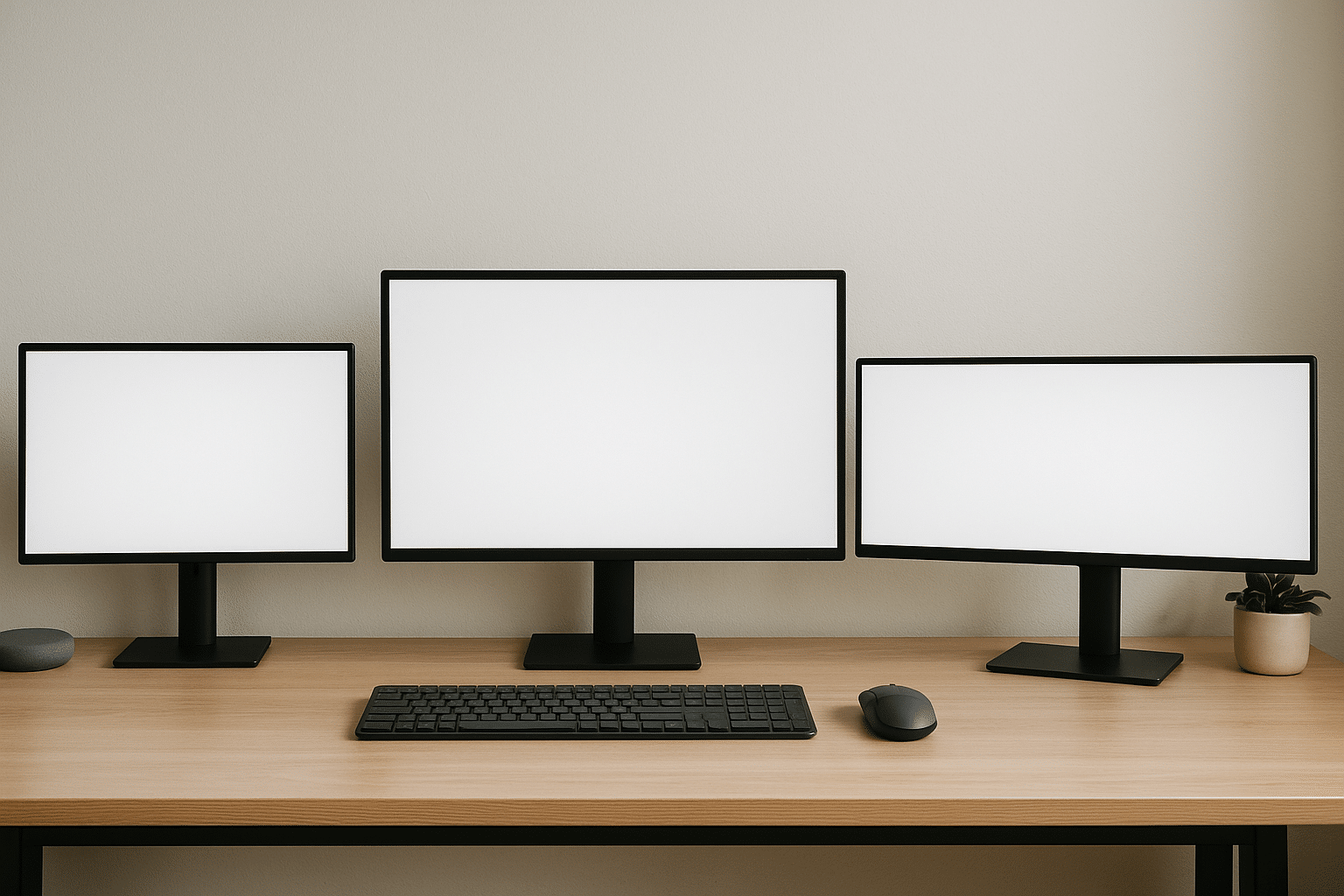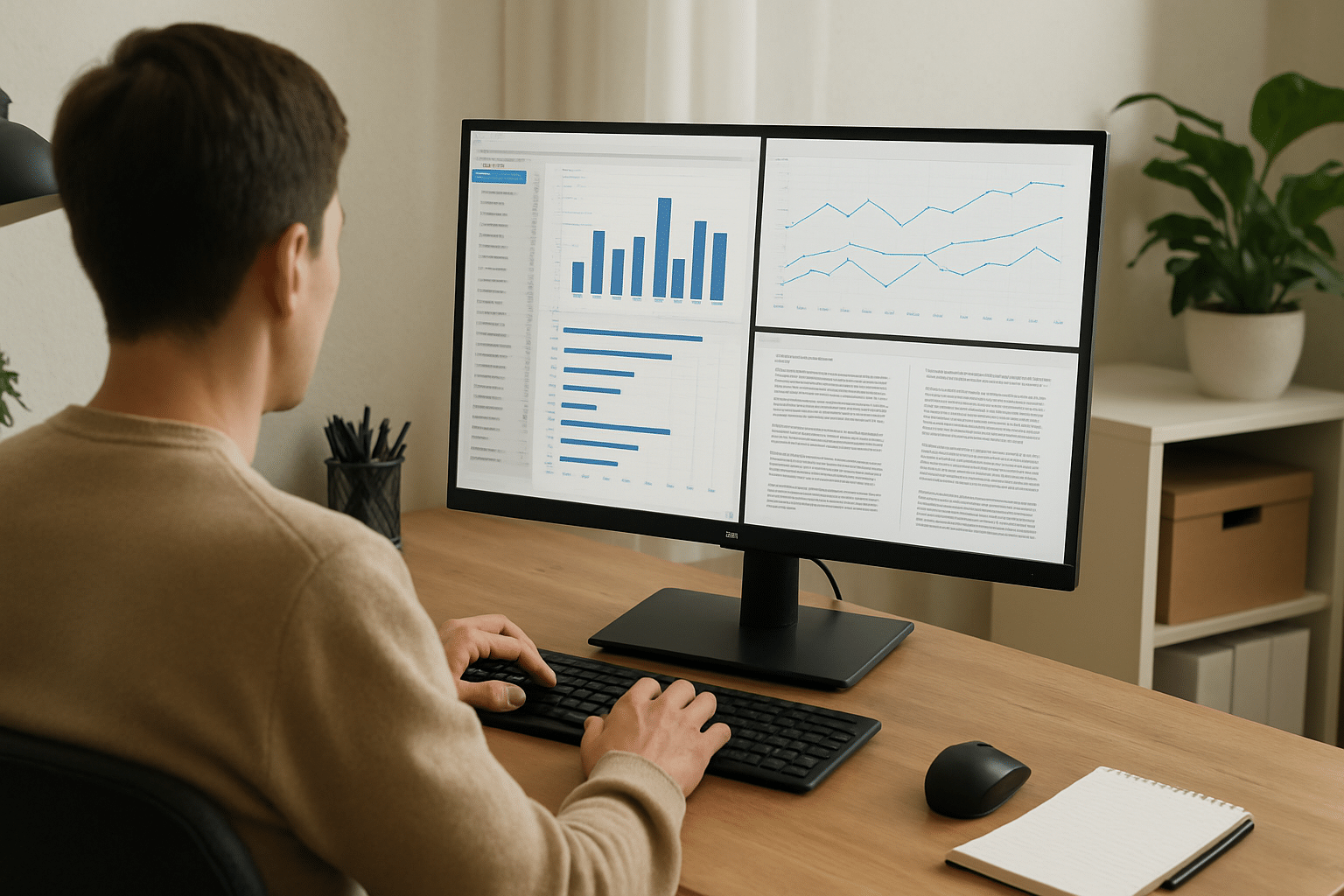
Monitor Sizes Explained: 24”, 27”, and Ultrawide Options
Choosing the right monitor size can significantly impact your productivity, comfort, and overall experience. With a plethora of options available, it can be challenging to determine which size best suits your needs. This guide explores the differences between 24”, 27”, and ultrawide monitors, highlighting their unique benefits and potential drawbacks to help you make an informed decision.
What are the Key Differences Between 24”, 27”, and Ultrawide Monitors?
When selecting a monitor, understanding the distinctions between sizes is crucial. Each size offers unique advantages, from the compact and versatile 24” to the immersive and expansive ultrawide options.
Pros and Cons of Each Monitor Size
- 24” Monitors: Affordable, space-saving, but limited screen real estate.
- 27” Monitors: Good balance of size and resolution, but slightly more expensive.
- Ultrawide Monitors: Excellent for multitasking, immersive, but require more desk space and investment.
- 24” Monitors: Easy on the eyes for extended use, but may lack detail for design work.
- 27” Monitors: Ideal for gaming with high refresh rates, but not as portable.
- Ultrawide Monitors: Superior for split-screen functionality, but can be overwhelming for small spaces.
24” Monitors: Compact and Cost-Effective
24” monitors are a popular choice for those who need a budget-friendly, space-efficient solution. These monitors are ideal for basic computing tasks such as browsing the web, word processing, and watching videos. Their compact size makes them perfect for small desks or workspaces where every inch counts.
However, the smaller screen real estate can be a limitation for tasks requiring more detail, such as graphic design or video editing. The standard 1080p resolution is sufficient for everyday use but may fall short for users seeking high-definition clarity. Despite these drawbacks, 24” monitors remain a reliable option for users prioritising affordability and simplicity.

27” Monitors: A Balanced Choice for Gaming and Design
27” monitors strike a balance between size and performance, making them a versatile choice for both gamers and creative professionals. With resolutions typically ranging from 1440p to 4K, these monitors offer enhanced clarity and detail, which is crucial for design work and immersive gaming experiences. The larger screen size provides a more engaging viewing experience without overwhelming your desk space.
While 27” monitors are slightly more expensive than their smaller counterparts, the improved visual quality and additional features often justify the cost. They are particularly well-suited for users who spend long hours in front of the screen, as the increased size helps reduce eye strain. Overall, this size offers a great middle ground for those seeking performance without sacrificing too much space or budget.
Comparison Table of Monitor Sizes
| Feature | 24” Monitor | 27” Monitor | Ultrawide Monitor |
|---|---|---|---|
| Aspect Ratio | 16:9 | 16:9 | 21:9 or 32:9 |
| Resolution | 1080p | 1440p or 4K | 1440p or 4K |
| Best For | Basic tasks | Gaming and design | Multitasking and immersive experiences |
| Price Range | £100-£200 | £200-£500 | £400+ |
| Desk Space | Minimal | Moderate | Significant |
Ultrawide Monitors: The Ultimate in Multitasking and Immersion
Ultrawide monitors provide an expansive field of view that is perfect for multitasking and immersive experiences. These monitors excel in productivity environments, allowing users to have multiple windows open side by side without the need for multiple screens. The wider aspect ratio, typically 21:9 or 32:9, offers a panoramic view that enhances gaming and cinematic experiences.
However, the benefits of ultrawide monitors come at a higher price and require significant desk space. They are best suited for users who can fully utilise their expansive capabilities, such as video editors, gamers, and professionals in need of extensive screen real estate. While they represent a larger investment, the productivity gains and immersive potential can be well worth it.
Conclusion
Choosing the right monitor size depends largely on your specific needs and workspace constraints. A 24” monitor offers affordability and compactness, perfect for basic tasks and small spaces. The 27” monitor provides a balanced option, with enhanced resolution and size suitable for gaming and design work.
For those seeking the ultimate in multitasking and immersive experiences, ultrawide monitors deliver unmatched screen real estate, albeit at a higher cost and space requirement. By considering your priorities and budget, you can select a monitor that best aligns with your requirements, enhancing both productivity and enjoyment.
Frequently Asked Questions
Is a 24” monitor sufficient for gaming?
A 24” monitor can be sufficient for gaming, especially if you’re on a budget or have limited space. However, for an enhanced gaming experience with better resolution and refresh rates, a 27” monitor might be more suitable. The larger screen size provides a more immersive experience, and many 27” monitors offer higher resolutions like 1440p, which can significantly improve graphics quality.
What are the benefits of an ultrawide monitor for work?
Ultrawide monitors are excellent for work environments that require multitasking. The increased horizontal space allows you to have multiple applications open simultaneously, reducing the need to switch between windows. This can boost productivity, particularly in roles involving data analysis, design, or video editing. The panoramic view also enhances the overall workspace aesthetic and functionality.
How much desk space does an ultrawide monitor require?
Ultrawide monitors require significantly more desk space than standard monitors. Their width can range from 29 inches to over 49 inches, depending on the model. It’s crucial to measure your desk area before purchasing to ensure it can accommodate the monitor comfortably. Additionally, consider the depth of the stand and any additional peripherals you might use.
Are 27” monitors better than 24” monitors for office work?
27” monitors can be better for office work due to their larger screen size and higher resolution options. This can reduce eye strain and improve productivity by allowing more content to be visible at once. However, the choice between 24” and 27” will depend on your specific needs, such as desk space and budget. If space is limited, a 24” monitor may still be adequate for typical office tasks.









